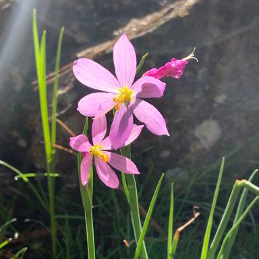Do you know about the Glacier Lily? This species is known as Glacier Lily because it often appears at the edge of receding snow banks. It is often mistaken for the Fawn Lily (of variety candidum). The stem of the Glacier Lily often changes from green to a deep rust color. All parts of this plant are edible; foliage is a favorite of wildlife including deer, elk, and bighorn sheep. Bears use their claws to dig out the edible bulbs, which can be boiled or dried and used in stews and other dishes. Ground squirrels and other rodents dig up the bulbs and store the for winter consumption. Other common names include Trout Lily, Dogtoothed Violet, and Adder’s Tongue.







